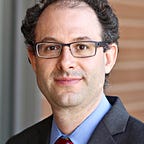California Should Change the Definition of “Capital Outlay” in Order to Create More Room Under the State Appropriations Limit.
(The Legislature Can Do So By Majority Vote.)
Proposition 13, passed in 1978, permanently cut California property taxes and made it more difficult to raise other taxes. Proposition 4, passed in 1979, placed a cap on the size of California’s state and local government. Both propositions have been amended over the decades, but their overall gist has remained the same.
Somewhat surprisingly, the state has now reached — and seemingly exceeded — the cap set by Proposition 4, known as the Gann Limit or State Appropriation Limit. If the state reaches the limit, then all revenue over the limit must be returned to taxpayers or spent on education.
The short answer as to how this has happened is this: the limit is roughly based on per capita tax collections and California’s progressive income tax has resulted in a lot of revenue. Of course, hitting the limit would be fine if California had no more urgent fiscal needs. But that is not so. To see why a formula developed in 1979 and updated in 1990 might misfire in 2022 (even if well designed then), consider how the state now needs to spend more and more on wildfire prevention or affordable housing.
One solution to the issue would be to revise the appropriation limit to better align with the state’s real needs, and there is at least one model for how to do this. In the short term, the Legislative Analyst has proposed a number of ways for the state to create more room under current law for other spending priorities.
There is one approach, however, that, oddly, I have not seen developed and that I will briefly explain here. The appropriations limit has an exception for “qualified capital outlays.” This makes sense because such outlays do not contribute to the permanent size of government but are long-term investments. What is a “capital outlay”? The Constitution explicitly leaves that question up to the Legislature. The Legislature, accordingly, has defined “capital outlay” as “an appropriation for a fixed asset (including land and construction) with a useful life of 10 or more years and a value which equals or exceeds one hundred thousand dollars ($100,000).”
This is reasonable enough, but also overly restrictive as a policy matter. Consider wildfires again. Thinning out the forests represents a long-term investment in the state and yet such costs would not be considered a capital outlay and exempt from the Gann limit. A capital expenditure for purposes of the federal income tax would include, among other things “An amount paid to improve a unit of real or personal tangible property.” Thinning the forest would count. The federal rules would also capitalize “[a]n amount paid to acquire or produce a unit of real or personal tangible property” or [a]n amount paid to acquire or create intangibles.” And so the purchase of fire equipment would count as capital, as would new software systems meant to manage wildfires.
Note that if the state changed the definition following the federal model, this would not only create more fiscal room for the state, but also for local governments, which have their own appropriations limits. As the LAO has explained, the state could create still more room for itself by increasing subventions to local governments that have room under their appropriations limits because subventions are another exception from the state appropriate limit.
Changing the statute defining capital outlay would require a majority vote of the Legislature and would not require a constitutional amendment.
